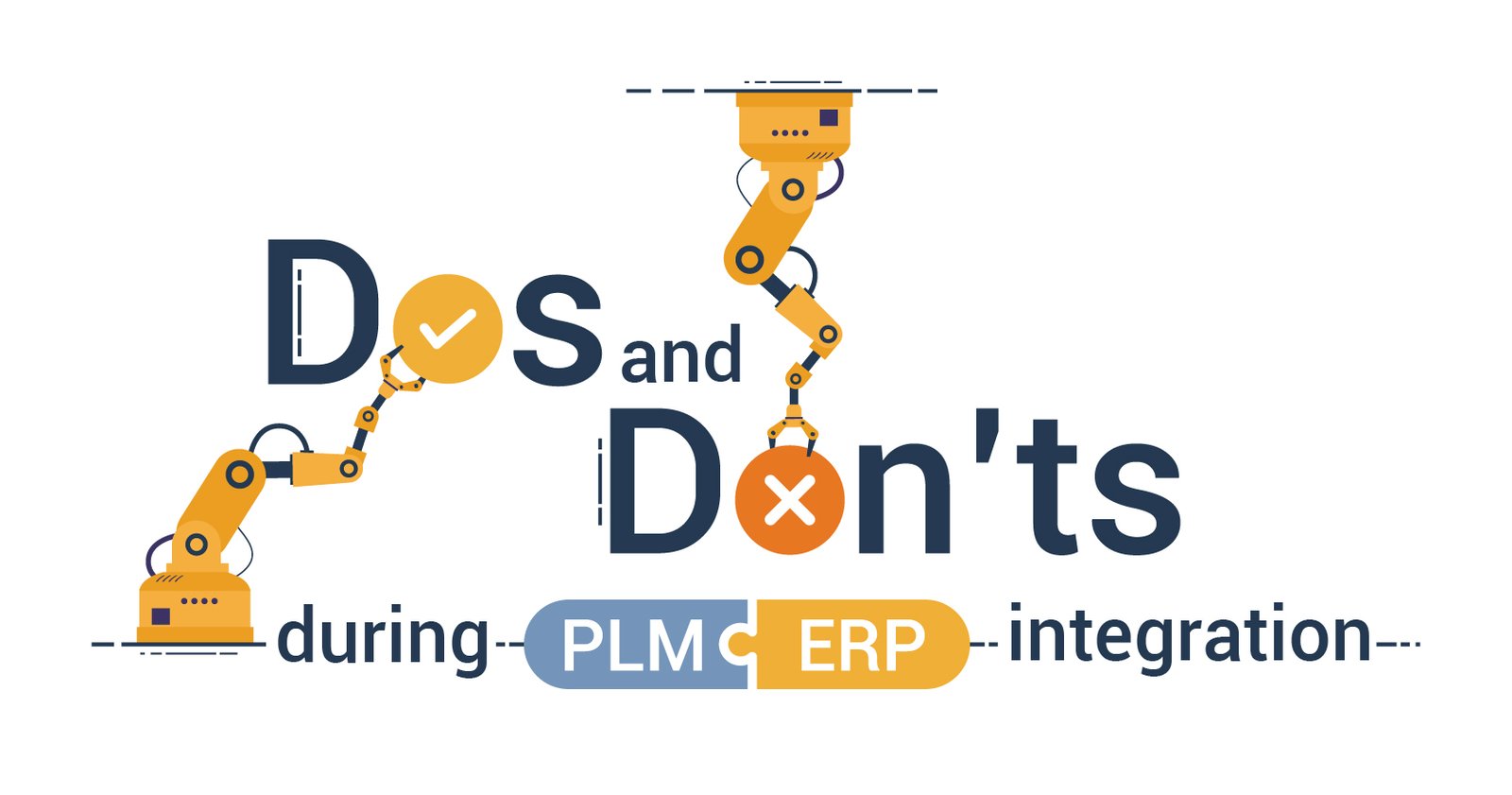Integrating your PLM and ERP systems helps bring your engineering and manufacturing worlds closer. While it’s great to implement a PLM-ERP integration solution for your manufacturing business, there are a few dos and don’ts you must know, to ensure trouble-free integration.
We at To-Increase have helped multiple manufacturing enterprises integrate their PLM systems with Dynamics 365 ERP for over 18 years.
Based on our experience, we will share 5 dos and 5 don’ts to remember during PLM-ERP integration, in this article.
Top 5 Dos during PLM-ERP integration
1. Do plan your implementation strategy in advance
Follow a well-planned implementation methodology to accommodate scalability and ensure everyone is aligned. Clearly communicate any questions or requirements to your implementation partner and identify timelines to be aware of the preparations you must make. Ensure you have a 360-degree view of the implementation project to stay ahead of any integration issues.
2. Do your research on all the integration options available
Decide on the 'type of integration scenario' you want for your PLM-ERP integration based on the output format of your PLM system. Make a list of the features and technical requirements you're looking for in the integration solution.
3. Do analyze your product data thoroughly
Do a careful review of the data you have in the PLM system and the data you require in the ERP system. You must be aware of your data's volume, type, format, complexity, and location. Determine the files' import format, the data structures for accurate mapping, the bill of materials (BOMs), and any other information that needs to be transferred as "attributes."
4. Do test the PLM-ERP integration
You must check the PLM-ERP integration's reliability and accuracy after it has been deployed. Verify that the ERP can read the PLM system's output and that the data transferred is accurate. You can perform ‘user acceptance testing’ (UAT) with your chosen implementation partners or consultants.
5. Do train all the end users
There is a change in the ownership and maintenance of product data among the engineering and manufacturing teams after PLM-ERP integration. Train all the end-users involved in servicing, handling, and selling products, so they know how to read, translate, and use the data to carry out engineering and manufacturing activities.
Top 5 Don’ts during PLM-ERP integration
1. Don’t neglect data ownership and maintenance
Define what kind of data you wish to update and control, so the PLM-ERP integration works per your requirements.
It’s vital to know what data you want to control in your PLM system and the data to be controlled locally (in the operating company) to maintain data ownership. You should understand the location of your master data and what data you want to release to the different legal entities.
2. Don't underestimate data sorting and migration
During PLM-ERP integration, businesses often underestimate, if not miss, data migration and sorting. With an enormous amount of data at hand, you must decide how to clean up and convert the data to avoid inconsistencies in the data location and format.
During PLM-ERP integration, migrate all your data and decide what to do with the existing data in the new and old ERP and PLM systems. Don’t miss integrating vital data in cases where you want to implement a new ERP system altogether.
3. Don't deviate from set timelines
You will have defined timelines for each phase of the implementation process during PLM-ERP integration. To reap the long-term benefits of the PLM-ERP integration, plan each process with set schedules, defined project plans, and scope of work to minimize adjusting or deviating from the timelines.
At the same time, do not be hasty with the set plans, project specifications, or budgets, as the implementation needs to be done accurately and precisely to offer you a successful integration.
4. Don't add repeated customizations with an ongoing implementation
You might wish to add more data sets to be transferred from the PLM to the ERP. While it isn’t incorrect to do so, it does result in additional effort for the implementation team, as they must work on accommodating changes. This results in a longer implementation time, and the preparation, configuration, and testing processes for the new data sets must be repeated.
Have a thorough understanding of which data sets you want to transfer from the PLM to your ERP to minimize repeated changes or alterations to the integration.
5. Don't overlook data quality and data governance
When integrating your PLM and ERP, a mechanism must be in place to ensure the data transferred is according to the requirements and under the set conformations. Don't miss out on the data quality features in a PLM-ERP integration solution that validates if the PLM data is mapped correctly to the ERP.
The integration must prevent data changes in the PLM and ERP systems through an established data validation and governance process.
Get started with PLM-ERP integration today!
As a manufacturing company, you must be aware of the above-discussed dos and don’ts while integrating your PLM and ERP systems, so you are well prepared for the PLM-ERP integration process.
The next steps you could take are:
1. Look for a PLM-ERP integration solution that you can implement easily and quickly
2. Identify an implementation partner with proven expertise in integrating the PLM and ERP systems you use
3. Discuss and plan what you want to achieve with the PLM-ERP integration
If you are using (or planning to use) Dynamics 365 ERP, you might be interested in exploring the PLM-ERP integration solution we offer for Dynamics 365 Finance and Supply Chain Management.
We offer out-of-the-box PLM integrations for Siemens Teamcenter and PTC Windchill. Additionally, we provide PLM integrations with 3DX Dassault and a PLM integration framework that you can easily configure for other PLM, PDM, or CAD systems. You can explore our intuitive and easy-to-use PLM-ERP integration solution by diving into the factsheet below.





